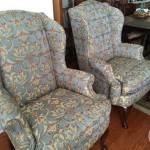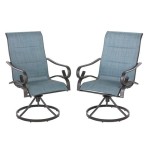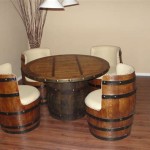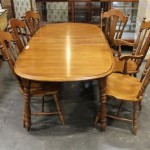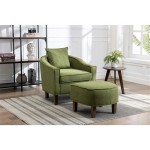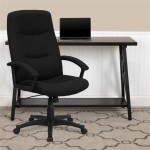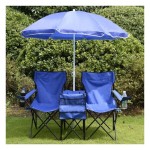Island Tables For Kitchen With Chairs: A Comprehensive Guide
The kitchen island has evolved from a simple workspace into a multifunctional hub for cooking, dining, and socializing. Integrating seating into the island design, specifically through the addition of chairs, enhances its versatility and transforms the kitchen into a more inviting and practical space. Island tables with chairs offer numerous benefits, impacting both the functionality and aesthetic appeal of the kitchen environment. This article explores the multifaceted aspects of kitchen island tables with chairs, covering key considerations for design, functionality, and material selection.
Optimizing Kitchen Space and Functionality
One primary advantage of incorporating an island table with chairs is the optimization of kitchen space. In smaller kitchens where a formal dining area may be impractical, the island can serve as a primary eating surface. This eliminates the need for a separate table, freeing up valuable floor space for other activities. In larger kitchens, the island table provides a more casual dining option, ideal for quick meals, snacks, or informal gatherings. The integrated seating encourages interaction and creates a more convivial atmosphere within the kitchen environment. Furthermore, the island can function as a central prep area, allowing multiple individuals to work comfortably together in the kitchen, fostering collaboration during meal preparation.
Functionality is significantly enhanced by incorporating chairs at a kitchen island. The addition of seating allows for a more diverse range of activities to take place at the island. Individuals can use the space for tasks such as chopping vegetables, reviewing recipes, or even working remotely from the kitchen. Children can complete homework or engage in crafts while remaining within view of the cook, promoting both supervision and interaction. The elevated seating provided by bar stools or counter-height chairs allows for ergonomic comfort during these various activities. The design of the island can also accommodate storage solutions, such as cabinets or drawers, further enhancing its utility and minimizing clutter within the kitchen.
The strategic placement of the island is crucial for maximizing its utility. Ideally, the island should be situated in a central location within the kitchen, allowing for easy access to all major appliances and work areas. Adequate clearance space, typically 36 to 48 inches, should be maintained around the island to ensure comfortable movement and prevent obstruction of walkways. The dimensions of the island should be proportional to the size of the kitchen to avoid overcrowding the space. Careful consideration should be given to the placement of electrical outlets and plumbing fixtures, which may be required for appliances or a sink integrated into the island design. Proper lighting is also essential to provide adequate illumination for food preparation and other tasks performed at the island.
Design Considerations for Island Tables and Chairs
The design of the island table and chairs is a crucial aspect that influences the overall aesthetic of the kitchen. A wide range of styles, materials, and configurations are available to suit different tastes and kitchen layouts. Selecting materials that complement the existing cabinetry and countertops is essential for creating a cohesive and harmonious design. The choice of seating should also be carefully considered, taking into account factors such as comfort, durability, and style. The height of the chairs should be appropriate for the height of the island countertop, ensuring that individuals can sit comfortably while using the island.
The shape and size of the island can significantly impact the functionality and traffic flow within the kitchen. Rectangular islands are a popular choice, providing ample workspace and seating for multiple individuals. L-shaped islands can be used to create a more defined separation between the kitchen and adjacent living areas. Round or oval islands can soften the angular lines of the kitchen and create a more inviting gathering space. The size of the island should be proportionate to the size of the kitchen, avoiding overcrowding and allowing for comfortable movement.
The materials used for the island countertop and seating are critical considerations. Popular countertop materials include granite, quartz, marble, and wood. Granite and quartz are durable and stain-resistant options that are ideal for food preparation areas. Marble is a luxurious option that adds a touch of elegance to the kitchen, but requires more maintenance due to its porous nature. Wood countertops offer a warm and inviting aesthetic, but require regular sealing to prevent water damage. Seating options include bar stools, counter-height chairs, and benches. Bar stools are typically used with islands that have a raised countertop, while counter-height chairs are used with islands that have a standard countertop height. Benches can provide flexible seating options, accommodating multiple individuals and creating a more casual atmosphere.
Material Selection and Durability
The selection of appropriate materials is critical for ensuring the longevity and functionality of the island table and chairs. Durability is a key consideration, particularly for surfaces that will be subjected to frequent use and potential spills. Materials should be chosen based on their resistance to scratches, stains, and heat. The ease of maintenance is also an important factor, as the island and seating will require regular cleaning to maintain their appearance and hygiene. Cost is also a consideration, as different materials vary significantly in price.
For the island countertop, granite and quartz are excellent choices due to their durability and stain resistance. These materials are relatively easy to clean and require minimal maintenance. Wood countertops offer a warm and inviting aesthetic, but require regular sealing to prevent water damage. Laminate countertops are a more affordable option, but are less durable than granite, quartz, or wood. The edges of the countertop should be properly sealed to prevent water from seeping into the core material. The thickness of the countertop should also be adequate to support the weight of appliances and other items placed on the island.
The materials used for the seating should also be durable and easy to clean. Wood chairs are a classic choice, offering a timeless appeal and durability. Metal chairs are a more modern option that is also easy to clean and maintain. Upholstered chairs provide added comfort, but require more care to prevent stains and wear. The fabric used for upholstered chairs should be stain-resistant and easy to clean. The frames of the chairs should be sturdy and well-constructed to ensure stability and prevent wobbling. The height of the chairs should be appropriate for the height of the island countertop, ensuring that individuals can sit comfortably while using the island.
Beyond the primary materials, hardware elements such as hinges, drawer pulls, and handles contribute to the overall durability and functionality of the island. These components should be constructed from high-quality materials such as stainless steel or brass to resist corrosion and wear. Proper installation is essential to ensure that these elements function smoothly and reliably over time. The selection of hardware should also complement the overall design aesthetic of the kitchen.
Lighting fixtures above the island should be chosen with consideration for both aesthetics and functionality. Pendant lights are a popular choice, providing focused illumination for food preparation and other tasks. Recessed lighting can provide ambient illumination, creating a more inviting atmosphere. The placement of the lighting fixtures should be strategic to ensure that the island is adequately lit without casting shadows on the work surface. The color temperature of the lighting should also be considered, as warm lighting can create a more inviting atmosphere, while cool lighting can provide better visibility for detailed tasks.
Integrating power outlets and USB ports into the island design can significantly enhance its functionality. These features allow individuals to easily charge electronic devices or use small appliances at the island. The placement of the outlets should be carefully considered to avoid obstructing the work surface or creating a safety hazard. The outlets should be GFCI-protected to prevent electrical shock in wet environments. USB ports can be integrated into the outlets or installed separately, providing convenient charging options for mobile devices.
Ultimately, the selection of an island table with chairs is a multifaceted decision requiring careful consideration of space, design, and materials. When executed effectively, an island table with chairs can transform a kitchen into a more functional, stylish, and inviting space for cooking, dining, and socializing.

7 Creative Design Ideas For Kitchen Island Bench Seating

Kitchen Island With Seating Etsy

Designing A Kitchen Island With Seating The Perfect Social Space Planet Furniture

18 Awesome Kitchen Islands With Built In Seating

30 Kitchen Islands With Seating And Dining Areas Digsdigs

Costway 4 Piece Dining Table And Chairs Set Kitchen Island W Bench Storage

74 Modern And Smart Kitchen Island Seating Options Digsdigs

Kitchen Islands Used As Dining Table With 6 Chairs Transitional

Our Kitchen Seating Guide From Bar Stools To Traditional Dining Chairs

Homestyles Americana Black Kitchen Island With Seating 5003 948 The Home
